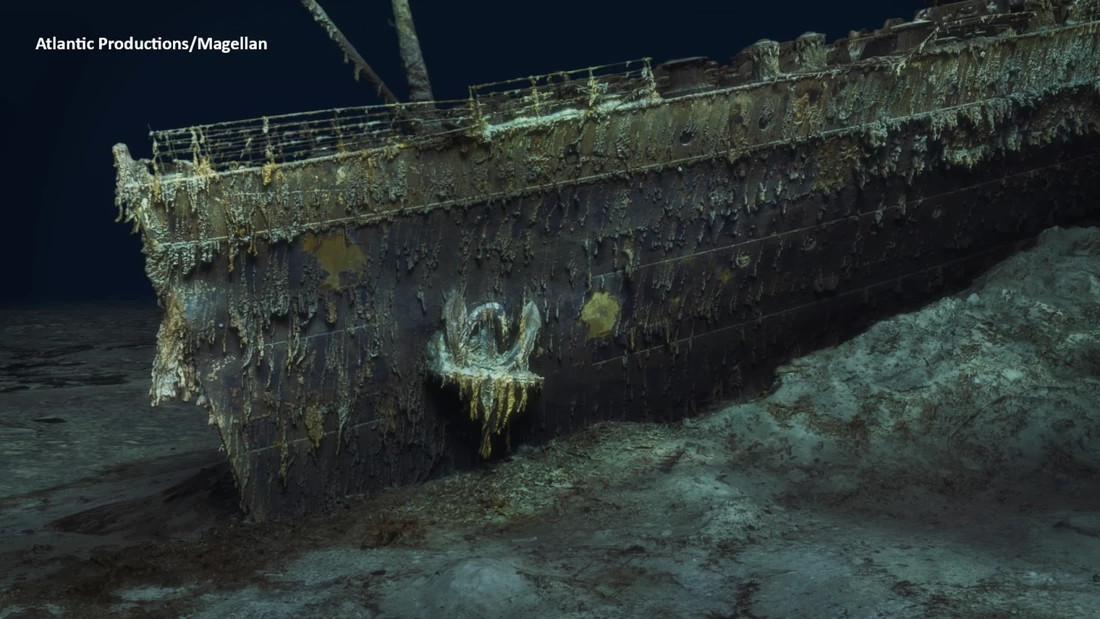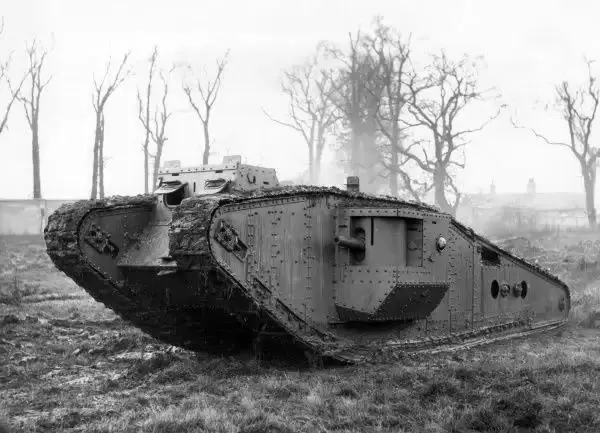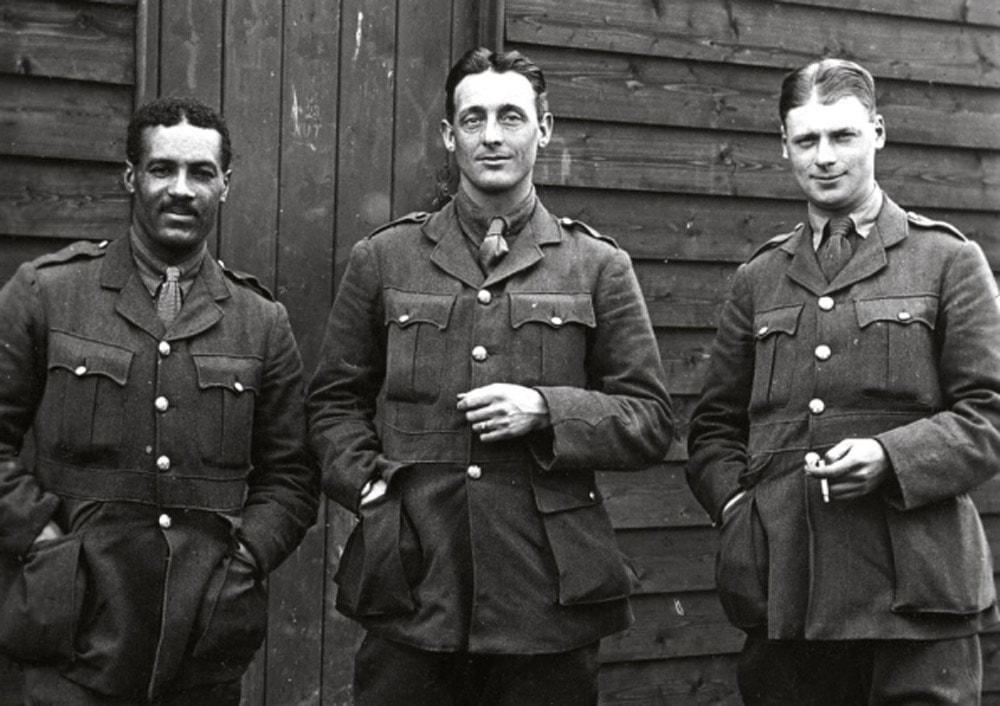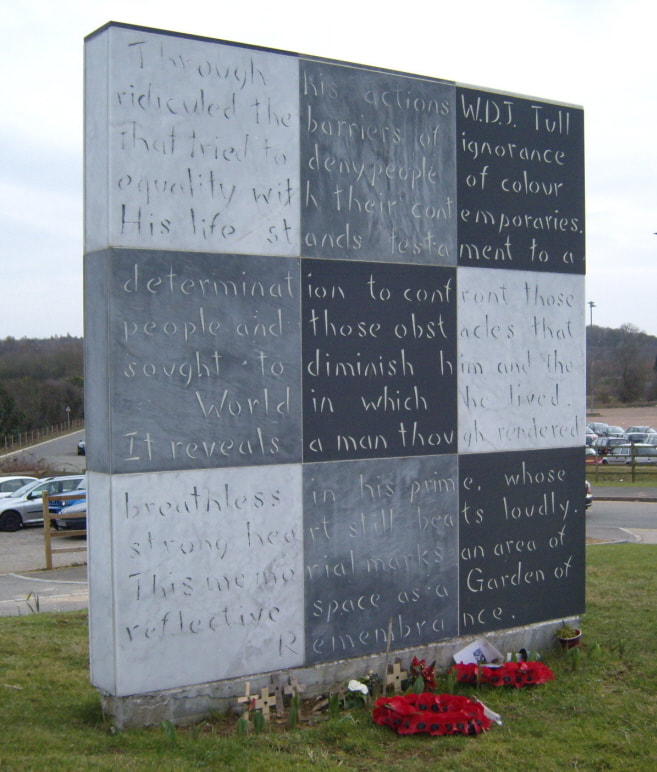|
The sinking of the RMS Titanic on April 15, 1912, stands as one of the most tragic and memorable events in maritime history. This catastrophic event, which claimed over 1,500 lives, has been the subject of extensive analysis, leading to a deeper understanding of the various factors that contributed to the disaster. Launched by the White Star Line, the Titanic was, at the time, the largest and most luxurious passenger ship in the world. Dubbed as "unsinkable," the ship was a marvel of contemporary engineering and design. The Titanic's construction boasted advanced features such as watertight compartments and electronically controlled watertight doors, designed to make it one of the safest ships afloat. However, despite these advanced features, the ship had several critical flaws that would contribute to its demise.
Ultimately, the most significant and obvious factor in the Titanic's sinking was its collision with an iceberg in the North Atlantic. While the presence of icebergs in the North Atlantic was well-known, the Titanic's crew was confident in the ship's ability to withstand any maritime hazard. This confidence, combined with the ship's high speed, contributed to the collision. The Titanic was sailing near its maximum speed when it struck the iceberg. The decision to maintain such a high speed in an area known for icebergs has been widely criticized. Scholars argue that if the ship had been moving slower, the collision might have been avoided, or the impact could have been less severe. That notwithstanding, the design of the Titanic also played a crucial role in the disaster. The ship's watertight compartments were designed to keep it afloat even if several compartments were breached. However, the collision with the iceberg caused damage across multiple compartments, extending beyond what the ship's design could withstand. Additionally, the bulkheads of these compartments did not extend high enough, allowing water to flow from one compartment to another, which hastened the sinking. Another critical factor contributing to the huge loss of human life was the lack of adequate lifeboats. The Titanic carried only enough lifeboats for about half of the people on board, based on outdated maritime safety regulations. This shortage was a result of the belief in the ship's unsinkability, a misconception that also led to a lack of lifeboat drills and preparedness among the crew. When the ship began to sink, the insufficient number of lifeboats, coupled with the crew's lack of preparedness, resulted in a chaotic and ineffective evacuation. Many lifeboats were launched with far fewer passengers than they could carry, exacerbating the tragedy. The technological limitations of the era also contributed to the disaster. The Titanic's wireless operators received multiple iceberg warnings from other ships, but not all of these warnings reached the bridge due to the operators' focus on transmitting passenger messages. Furthermore, the ship's lookouts did not have binoculars, which might have helped them spot the iceberg sooner. After the collision, the Titanic's distress signals were not received by nearby ships equipped to help, either because they were too far away or because their wireless operators were off duty. The sinking of the Titanic had far-reaching consequences, leading to significant changes in maritime safety regulations. The disaster highlighted the need for sufficient lifeboats, continuous wireless communication on ships, and the establishment of the International Ice Patrol to monitor iceberg danger in the North Atlantic. Clearly, the sinking of the Titanic was a multifaceted disaster resulting from a combination of human error, design flaws, and technological limitations. The overconfidence in the ship's unsinkability, the decision to sail at high speed despite iceberg warnings, the insufficient number of lifeboats, and the lack of preparedness all contributed to the magnitude of the tragedy. The Titanic's story remains a poignant reminder of the potential consequences of human hubris and the importance of safety over grandeur in maritime engineering. For more history, please follow Versus History here.
0 Comments
The First World War, remembered for its sweeping scale and tragic intensity, introduced the world to the brutal reality of trench warfare. This method of combat, characterized by deep, fortified trenches, emerged as a dominant feature on the Western Front, defining the conflict and shaping the course of history and historical memory. Trench warfare was not a premeditated strategy at the war's inception but rather evolved as a response to the unexpected stalemate that followed the Battle of the Marne in September 1914. As the rapid manoeuvres of the early months of the war ground to a halt, armies on both sides found themselves in a deadlock. To protect themselves from increasingly lethal weaponry, such as machine guns and artillery, soldiers began digging trenches, giving rise to a new form of warfare. The trenches themselves were complex structures, more than just simple ditches. They comprised frontline, support, and communication trenches, forming a vast network across the war-torn landscape. Life in these trenches was harsh and unforgiving. Soldiers lived under constant threat, not just from enemy fire but also from disease and the elements. The words of British soldier Henry Williamson paint a vivid picture: "ditches full of water up to one's knees, dead and wounded at the bottom," he described, capturing the grim reality of trench life. This new form of warfare led to a strategic stalemate. The defensive power provided by machine guns and artillery far exceeded the offensive capabilities of the era, rendering traditional charges across no man's land not just ineffective, but suicidal. Major offensives, such as the Battle of the Somme and Verdun, epitomized this futility. Despite horrific casualties, these battles failed to yield significant territorial gains. The persistence of leaders like General Haig at the Somme, despite the massive loss of life, exemplified the stubborn adherence to outdated tactics in the face of a changing war. The psychological impact of this endless, static warfare was profound. Soldiers grappled not only with physical hardships but also with the mental strain of constant bombardment and the sight of death and destruction all around them. The term "shell shock" emerged during this time, capturing the essence of the trauma experienced by combatants. Personal accounts, like those of soldier and poet Siegfried Sassoon, offer a glimpse into the despair and disillusionment that pervaded the trenches. As the war progressed, both sides sought ways to break the deadlock, experimenting with new strategies and technologies. The introduction of poison gas and the tank in 1916 represented early attempts to gain an advantage, but these innovations were initially too rudimentary to decisively tip the scales. The invention and deployment of the tank during the Battle of the Somme, under Haig’s command, in and of itself blunt the accusation that Haig was a ‘technophobe’, zealously wedded to traditional mass assaults on enemy trenches. He was willing to countenance new approaches and strategies, although these were often to embryonic to yield the degree of success hoped for. Over time, tactics evolved, and the war saw more coordinated and sophisticated use of artillery and infantry in tandem.
The end of trench warfare and the deadlock it represented came about through a combination of factors. The erosion of the Central Powers’ resources, strategic errors, and the entry of the United States into the war played pivotal roles in breaking the stalemate. The resolution of this deadlock marked a significant turning point in the conflict and reshaped modern military tactics and strategy. Trench warfare on the Western Front was a defining characteristic of World War I, resulting from the defensive advantages of new technologies and the slow adaptation of military tactics. Its legacy is a stark reminder of the human cost of war and the profound impact of technological change on the nature of conflict. Written by the Versus History Guest Contributor Calvin J. Gascoigne. The Battle of Stalingrad 1942-1943, one of the most pivotal confrontations of World War II, stands as a stark example of military overreach, tactical miscalculation, and the resilience of Soviet forces. The German defeat in this brutal battle can be attributed to several critical factors that, combined, sealed the fate of the Axis forces on the Eastern Front. One of the fundamental reasons for the German defeat was Adolf Hitler's strategic overreach. Hitler's initial plan, Operation Barbarossa, was based on a quick defeat of the Soviet Union. However, as the war dragged on, the Germans were unprepared for a prolonged conflict. Hitler's obsession with capturing Stalingrad, a city of symbolic and strategic importance, led to an underestimation of Soviet resolve and resources. His directive, as quoted in a Führer Directive, was clear: "The city of Stalingrad must be taken." This obsession proved to be a critical blunder. Moreover, the Wehrmacht faced severe logistical challenges. The extended supply lines from Germany to Stalingrad were constantly harassed by Soviet partisans, significantly reducing the flow of supplies, reinforcements, and ammunition to the German 6th Army. Moreover, the harsh Russian winter of 1942-1943 added to these woes. German soldiers, ill-equipped for winter warfare, suffered immensely in the freezing conditions, which severely impacted their combat effectiveness. On the other side, the Soviet defense of Stalingrad, led by General Vasily Chuikov, was marked by extraordinary resilience and resourcefulness. The Soviets adopted a strategy of "hugging" the enemy, engaging in close-quarter combat to negate the Germans' advantage in heavy artillery and air support. Chuikov famously stated, "We will defend the city or die in the attempt." The tenacity of the Soviet soldiers, coupled with effective use of their limited resources, played a crucial role in their eventual victory. German operational failures also contributed significantly to their defeat. The 6th Army, under General Friedrich Paulus, became entrenched in brutal urban warfare, for which they were not trained or prepared. The rigid tactics employed by the German commanders failed to adapt to the changing nature of combat in Stalingrad's ravaged landscape. The turning point in the battle came with the Soviet counteroffensive, Operation Uranus, which was launched in November 1942. This operation successfully encircled the German 6th Army, trapping about 300,000 Axis soldiers in Stalingrad. The encirclement was a devastating blow to the Germans, cutting off their supply lines and leaving them isolated. Despite the dire situation, Hitler refused to allow a strategic withdrawal. His order, relayed through the High Command, was unequivocal: "The 6th Army will hold their positions to the last man and the last round." This stubbornness to retreat further doomed the encircled forces. Ultimately, the German defeat at Stalingrad was the result of a combination of strategic overreach by Hitler, logistical inadequacies, harsh winter conditions, formidable Soviet resistance and strategy, operational failures on the part of the German Army, and the successful Soviet encirclement. This defeat marked a significant turning point in World War II, heralding the decline of German military fortunes on the Eastern Front. Written by Versus History Guest Contributor Ayesha Gill. Tony Blair's tenure as Prime Minister of the United Kingdom, spanning from May 1997 to June 2007, was a period marked by significant political and social change. His leadership, characterized by a blend of traditional Labour policies with a more centrist approach known as "New Labour," initially garnered widespread public and political support. However, the latter years of his premiership were clouded by controversy, leading to his eventual resignation. To understand the reasons behind the end of Blair's tenure, it is essential to consider a confluence of factors, including policy decisions, public opinion, party dynamics, and international events.
Tony Blair's ascent to Prime Minister in 1997 marked a turning point for the Labour Party. The party, under his leadership, had undergone a significant transformation, shedding some of its traditional socialist policies and embracing a more centrist, market-friendly approach. This rebranding, known as "New Labour," was instrumental in Blair's landslide victory in the 1997 general election. Blair's early years in office were marked by a focus on modernizing public services, devolution, and constitutional reform. His government introduced the National Minimum Wage, established the Human Rights Act, and initiated peace talks in Northern Ireland that led to the Good Friday Agreement. However, the initial enthusiasm for Blair's government began to wane in the early 2000s. One of the critical turning points was the government's decision to participate in the Iraq War in 2003. Blair's staunch support for the United States and President George W. Bush, particularly in the absence of a United Nations mandate and amidst public skepticism about the existence of weapons of mass destruction in Iraq, drew substantial criticism and sparked widespread protests. The failure to find these weapons post-invasion severely damaged Blair's credibility and trustworthiness, both with the public and within his own party. The Iraq War was not the only issue that eroded Blair's support. Domestically, there were concerns about the pace and nature of public sector reforms, particularly in health and education. Blair's approach, which often involved private sector partnerships and competition, was seen by some as a betrayal of traditional Labour values. This discontent was not limited to the electorate but was also evident within the Labour Party, leading to internal strife and divisions. Another significant factor in Blair's eventual resignation was his relationship with Gordon Brown, his Chancellor of the Exchequer and eventual successor. Brown, who had been influential in shaping many of the government's economic policies, was widely seen as the heir apparent. However, the relationship between Blair and Brown grew increasingly strained over time, with Brown and his supporters pushing for Blair to step aside and allow for a leadership transition. This internal party tension added to the growing pressure on Blair to resign. Public opinion also played a crucial role in the decline of Blair's premiership. The initial optimism and hope that had accompanied his election in 1997 had, over the years, given way to disillusionment and criticism. Key policy decisions, such as involvement in the Iraq War and certain domestic reforms, had alienated segments of the Labour Party's traditional base. Additionally, a series of scandals and controversies, including issues related to campaign financing and the handling of government contracts, further undermined public trust in Blair's government. The media's portrayal of Blair and his policies also shifted over time. Initially hailed as a young, dynamic leader who could modernize Britain by typically right wing newspapers such as 'The Sun', the media's narrative changed as controversies mounted. The press, which had once been largely supportive of Blair, became increasingly critical, especially in its coverage of the Iraq War and its aftermath. In assessing Blair's premiership, it's crucial to consider the broader international and domestic context. Blair's government was navigating a rapidly changing world, marked by globalization, the aftermath of 9/11, and shifting international dynamics. Domestically, Blair's attempt to redefine Labour and appeal to a broader electorate was initially successful but ultimately led to tensions within the party and among its traditional supporters. Blair’s initial popularity and success, driven by a vision of modernizing Britain and redefining Labour in the mid-to-late 1990s, gradually eroded due to controversial policy decisions, particularly the Iraq War, internal party dynamics, strained leadership relations, and a changing public mood. Blair's legacy, therefore, is a mixed one, marked by significant achievements and notable controversies. In short, Blair's bubble burst due to multiple factors, but it took a decade, which is an eternity in modern politics ... Written by Versus History Guest Contributor Felix Beddington. In an extraordinary turn of events, Liz Truss's tenure as Prime Minister of the United Kingdom was marked by brevity and turbulence. Her rapid fall from grace (at the start of September 2022, she wasn't PM yet; by the end of October, she had been replaced). Her story provides a compelling case study in political missteps and miscalculations. This article examines the three fundamental reasons behind Truss' downfall.
1. Economic Policy Missteps and Market Turbulence: Central to Truss's downfall was her government's economic policy, particularly the controversial mini-budget announced by her Chancellor, Kwasi Kwarteng. This budget included significant tax cuts, mainly benefiting the highest earners (reducing the top income tax rate from 45% to 40%), and lacked a clear funding strategy, leading to a severe backlash from both the public and financial markets. The announcement saw the pound sterling plummet to a record low against the dollar, a clear indication of lost confidence. Government borrowing costs soared, as evidenced by the dramatic rise in the yield on 10-year UK government bonds, which leapt from around 2.5% in early September to over 4% following the budget announcement. This economic turmoil was pivotal in eroding Truss's political (and the UK's financial!) capital. 2. Party Disunity and Leadership Challenges: Truss's leadership was further undermined by stark divisions within the Conservative Party. Her approach, characterized by a marked shift towards a more radical economic liberalism, alienated many in her party. This disunity was quantitatively evident in the House of Commons, where she faced significant rebellions from her MPs. The lack of party cohesion was not only a symptom but also a catalyst for her downfall. It impaired her ability to govern effectively, leading to a series of U-turns on policy decisions, which further eroded her dwindling authority and credibility. 3. Public Discontent and Eroding Trust: Finally, Truss's fall can be attributed to a rapid decline in public trust and approval. Polls conducted during her premiership indicated a significant loss of public confidence. For instance, an Ipsos MORI poll in early October 2022 showed a staggering decline in her approval ratings, with only about 20% of the public satisfied with her performance – a historical low for any sitting Prime Minister. This public discontent was fueled by her economic policies, perceived as favoring the wealthy, and her government's handling of the cost-of-living crisis, which continued to escalate under her watch. The end came swiftly ... Liz Truss's tenure as Prime Minister serves as a stark reminder of the volatility of political fortunes. Her rapid descent from the zenith of power was a confluence of economic miscalculations, party disunity, and a steep decline in public trust. These factors, intertwined and mutually reinforcing, culminated in one of the shortest and most tumultuous premierships in British history. Truss's story is a cautionary tale for political leaders, underscoring the importance of sound economic policy, party unity, and public engagement in the high-stakes arena of politics. Written by Versus History Guest Contributor Emily Hart-Vallance. The Unraveling Empire: Three Key Factors Behind Napoleon's Defeat at the Battle of Waterloo5/12/2023 The Battle of Waterloo, fought on June 18, 1815, stands as one of the most pivotal moments in European history. It marked the downfall of the charismatic military genius, Napoleon Bonaparte, and the end of his quest for European dominance. While the reasons for Napoleon's defeat are multifaceted, this article will delve into three main factors that played a crucial role in the outcome of the battle: strategic errors, logistical challenges, and the convergence of allied forces.
I. Strategic Errors: Napoleon's military acumen had been the driving force behind his numerous victories, but at Waterloo, his strategic brilliance seemed to falter. One of the key errors was his decision to delay the start of the battle until the ground had dried after heavy rainfall the previous night. This delay provided the Duke of Wellington, leading the Anglo-Allied forces, and Marshal Blücher, in charge of the Prussian forces, with precious time to consolidate their positions. Moreover, Napoleon's decision to split his forces and attack separately also proved detrimental. He initially engaged the British forces under Wellington at Hougoumont and La Haye Sainte, and while the French were successful in capturing these strongholds, it fragmented their forces. This dispersion weakened the overall French attack, allowing the Allies to regroup and reinforce their defenses. Another strategic blunder was Napoleon's failure to exploit the weakened center of the Allied line. The French army attacked the flanks, achieving some success against the British right and the Prussian left, but the center, commanded by Wellington, held firm. Had Napoleon concentrated his forces on the weakened center, he might have broken through and potentially divided the Allied forces, securing a decisive victory. II. Logistical Challenges: The logistics of warfare are often overlooked, but they played a crucial role in Napoleon's defeat at Waterloo. The French army, after years of campaigns across Europe, was stretched thin in terms of supplies, manpower, and equipment. Napoleon's return from exile in 1815, known as the Hundred Days, did not provide sufficient time to replenish and reorganize his forces adequately. The reliance on a complex supply chain also proved to be a vulnerability. The French army struggled to maintain a steady flow of provisions and ammunition to the front lines, leading to logistical difficulties that hampered the efficiency of their operations. In contrast, the Allies, particularly the Prussians, managed their supply lines more effectively, ensuring a consistent stream of reinforcements and resources to the battlefield. Furthermore, Napoleon's decision to engage in a protracted campaign without a clear logistical advantage strained his forces. The French army's endurance was tested during the long march from Paris to Belgium, and by the time they reached Waterloo, many soldiers were fatigued and demoralized. In contrast, the Allied forces, having had time to consolidate and prepare, were in a better state to face the challenges of battle. III. Convergence of Allied Forces: The Battle of Waterloo was not a one-sided affair but a convergence of multiple military powers aligned against Napoleon. The Duke of Wellington's Anglo-Allied forces, combined with the Prussian army led by Marshal Blücher, formed a formidable coalition. The coordination between these two armies played a pivotal role in Napoleon's defeat. The timely arrival of the Prussians on the battlefield, after an arduous march to reinforce Wellington, proved decisive. The Prussian attack on Napoleon's right flank disrupted the French offensive and created a critical diversion. The pressure exerted by the Prussians forced Napoleon to divert his attention and resources, diminishing the effectiveness of his overall strategy. Additionally, the cooperation between the British and Prussian forces during the battle showcased the strength of the Allied alliance. Wellington's resilience in holding the line against the initial French assaults, coupled with Blücher's determination to engage and press the French forces, created a synergy that ultimately overwhelmed Napoleon's army. To bring it all together ... The Battle of Waterloo was a watershed moment in European history, marking the end of Napoleon Bonaparte's ambitious military campaigns and the beginning of a new era of geopolitical stability. While Napoleon's defeat resulted from a combination of factors, the three main reasons discussed—strategic errors, logistical challenges, and the convergence of Allied forces—stand out as key contributors. Napoleon's unparalleled military successes had often masked the cracks in his strategic decision-making, and Waterloo exposed those weaknesses. The logistical strain on the French army, coupled with Napoleon's inability to adapt to the evolving dynamics of the battlefield, ultimately sealed his fate. The convergence of the Anglo-Allied and Prussian forces showcased the strength of the Allied coalition and demonstrated the significance of coordinated military efforts. The legacy of Waterloo endures as a cautionary tale about the delicate balance between military brilliance and the harsh realities of war. Napoleon's defeat at Waterloo, while a symbol of his fall from power, also highlighted the resilience of coalitions and the enduring importance of sound strategic planning in the theater of war. Written by Versus History Guest Blogger Arshad Khan. The following post, inspired by a walk along the Deptford /Greenwich stretch of the Thames, will discuss Peter the Great’s 3 month stay in London in 1698. The first Russian Tsar to visit Western Europe in over 100 years, Peter’s London visit was significant as it can provide us with valuable insight into his complex character and the nature of his rule over Russia. Peter was determined to modernise Russia and part of his strategy was building an alliance with British King William against France and Turkey. In many ways the London of 1698, like Peter himself, was characterized by opposites, on the one hand a violent city where crime, including murder, was rife and public floggings a regular occurrence, and on the other hand where a culture of intellectualism situated in the Citys coffee shops where intense and earnest discussion around religion, philosophy, commerce, and science would take place. It was in these places where anecdotal tales regarding Peter’s stay in Deptford flourished, notably the vandalism to John Evelyn’s estate in Deptford. Peter being anxious to begin a course of shipbuilding, the King allowed him to stay at Sayes Court, home to John Evelyn the writer and diarist. Unfortunately, Evelyn’s lavish estate ended up completely trashed by Peter and his entourage. Peter’s cohort was made up of a group of hard drinking men known for wild behaviour. Described by Robert Massie in his biography of Peter as a ‘motley collection of distinguished greybeards, youthful roisterers, and foreign adventurers’, this riotous behaviour and the company he kept, defined much of the young tsar’s reputation both in Russia and abroad. The damage to Evelyn’s estate included: floors and carpets smeared with ink and grease, broken windows, expensive family portraits used as target practice, curtains used as toilet paper, and every chair had been used for firewood. In the house’s grounds, a magnificent holly hedge, 400 feet long 9 feet high and 5 feet thick was flattened by wheelbarrows. Wheelbarrows were unknown in Russia and on discovering this novelty, Peter’s cohort had great fun devising a game with one man, often Peter himself, inside the barrow and another racing him into the hedge. The sum of all the damage came to £350, an absolute fortune at the time. While Peter’s hard drinking reputation may have made him notorious amongst London’s newly emerging intelligentsia, his travels in Europe served in many ways to change the course of Russian history. Elements of the British clergy viewed Peter’s arrival in Engand as an opportunity to extend their reach into otherwise uncharted territory. Most he ignored, apart from the Quakers. He met William Penn in Deptford and attended Quaker meetings regularly there. After his stay in London, he continued to attend Quaker houses in Europe. However, for the most part, he was sceptical of all religions and was instead seeking any doctrine which would be of use in his pragmatic aim of modernising the Russian state.
Whilst in London he explored most of the city on foot, visiting shops of craftsmen and purchasing an array of specialist equipment; scientific and medical instruments timepieces, watches, and hourglasses. He even acquired a coffin because he admired the fact that it was made of planks as opposed to the expensive method of using tree trunks as in Russia. He also saw an opportunity to expand the tobacco market through England’s colonial expansion into areas containing tobacco plantations. This had a double advantage for Peter, firstly to increase much needed revenue into the Russia economy and to upset the formal conservative orthodox church who had previously insisted on upholding a ban on tobacco. When Peter left England in April, he returned to Russia, hiring around 100 British engineers, shipbuilders, and navigators. With this additional manpower and newly acquired technical expertise, the young Tsar was able to develop a significant shipbuilding programme, which in turn established Russia as a major world power. Further reading Cross, A. (2000) Peter the Great through British Eyes: Perceptions and Representations of the Tsar since 1698. Cambridge: Cambridge University Press. Massie, R.K. (2013). Peter the Great: his life and world. London: Head Of Zeus. Evelyn, J., Bray, W. and Cromwell, V. (1973). The Diary of John Evelyn. London, Dent; New York, Dutton. Written by Versus History Guest History Blogger Karl Brown (@MrBuddwing65). You can follow Karl on Twitter here. Clichéd, perhaps: but the metaphor of history as a tapestry bears weight. Picture a rich panel of interwoven narratives, events, and symbols that come together to form a larger image of the world. And in the story of Walter Tull, a mixed heritage footballer and World War I army officer, we find one of these connecting threads between past, present, and future. In a happy coincidence, my own discovery of Walter Tull’s story came during both Black History Month (marked each October in the UK) and my teaching of a World War I unit to a GCSE History class. It was an unmissable opportunity to open dialogues with my students on a number of fronts, and to encourage them to use history to reflect on today’s society. Walter Tull: a life less ordinary |
Categories
All
Archives
April 2024
|













 RSS Feed
RSS Feed